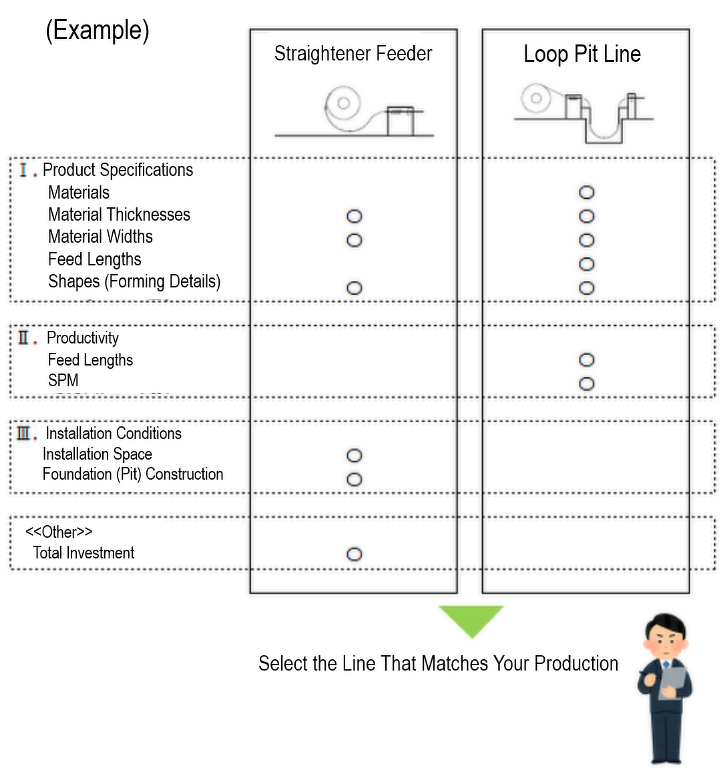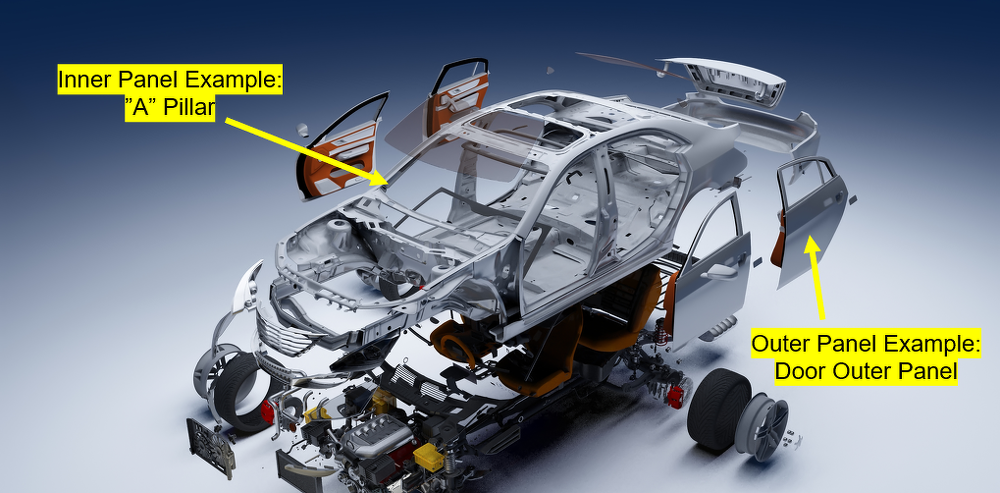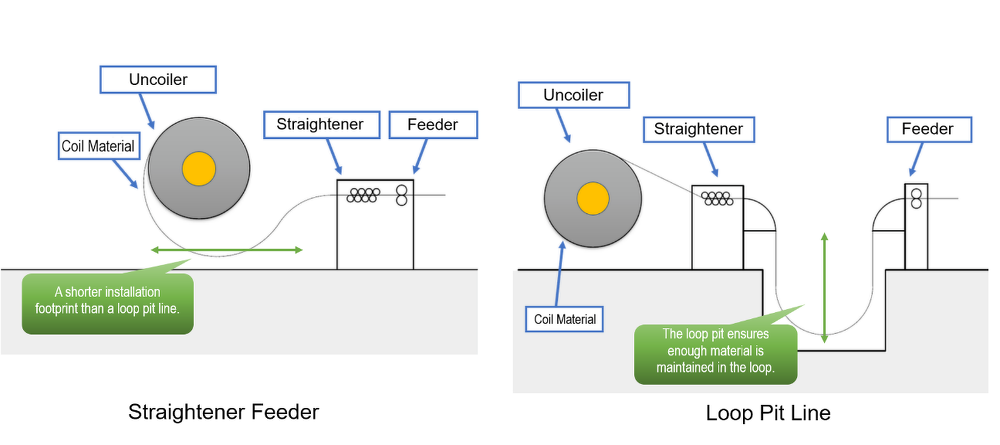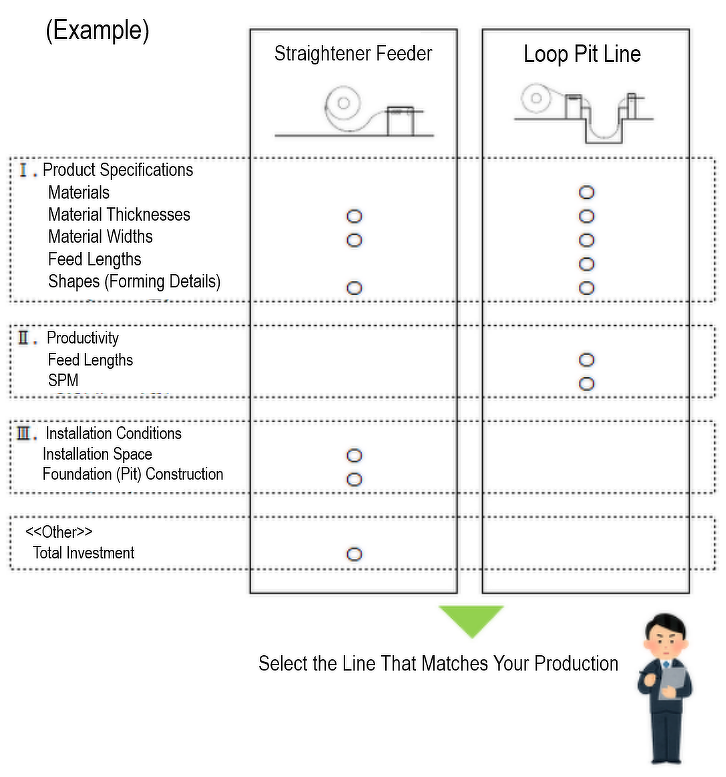
Should I Choose a Straightener Feeder or a Loop Pit Line? ~Product Specifications~
Hello!
In this blog post about whether to select a straightener feeder or a loop pit line, we will be comparing the three selection elements of '(1) Product Specifications,' '(2) Productivity,' and '(3) Installation Conditions.'
(1) What are Product Specifications?
As the name suggests, product specifications refer to the type of products you will be making.
Depending on the product, there will naturally be differences in the requisite quality:
• Is it a finished product where the exterior will be visible (i.e., an 'outer panel')?
• Is it a finished product where the exterior will not be visible (i.e., an 'inner panel')?
We will next talk about the three factors of "product shape," "product dimensions," and "measures to prevent contact marks from occurring on the materials" (which can have a major impact on product quality).

Inner Panels and Outer Panels (on a Vehicle)
■ Product Shape
Let's first compare 'product shapes.'
In the case of progressive forming applications where the products are cylindrical, etc., because the material will be coming into contact with the dies more often, the criteria regarding 'contact marks' would be relatively lenient, and thus there would normally be no issues with using a straightener feeder.
In the case of a blanking line that produces blanks, productivity (which will be explained later) is also a factor when choosing the optimal coil line (a straightener feeder or a loop pit line).
■ Product Dimensions
Next, let's look at product dimensions from the standpoint of the maximum feed length.
In the case of a straightener feeder, a loop is formed between the uncoiler and the straightener feeder, and because of the size of this loop, the maximum feed length is relatively short. (Max.: Approx. 1500 mm)
In the case of a loop pit line, long feed lengths are possible because the material is paid out to make sure there is a loop of material in the loop pit located downstream from the straightener. (Max.: Approx. 5000 mm)
If the product dimension in the line flow direction is large, a loop pit line would be more advantageous.

■ Contact Mark Prevention Measures
Due to the design of a straightener feeder, there may be marks resulting from spring tension loss in the coil material in the uncoiler area as well as contact marks due to the coil holder roll that is in contact with the exterior layer of the coil.
This is because the uncoiler freely turns to form a loop, making it easy for a loss of coil spring tension, and thus production is run without releasing the coil holder (see the photo below) in order to suppress this loss of tension.
And because the work rolls in the straightener section are running intermittently, roll marks will occur when the rolls come to a stop.

Straightener Feeder (LFA-L Series)
In the case of a loop pit line, the uncoiler does not freely turn during production. Instead, material is paid out as it is pulled by the straightener, which results in less spring tension loss in the coil.
And it can also reduce the occurrence of contact marks because the coil holder can be released.
Another advantage is that roll marks will be eliminated as long as the straightener is running continuously.
Accordingly, if the finished product will be visible on the outside (i.e., an outer panel), a loop pit line will necessarily be selected, and generally speaking, if running non-ferrous metal materials such as aluminum (especially if it is a soft material like aluminum), a loop pit line is often selected because of its superior countermeasures for contact marks.
Summary

In this blog post we have looked at whether to select a straightener feeder or a loop pit line based on (1) Product Specifications. This is summarized in the above table.
In our next blog entry, we will compare the two types based on (2) Productivity and (3) Installation Conditions.
We hope you will take the time to read it!
